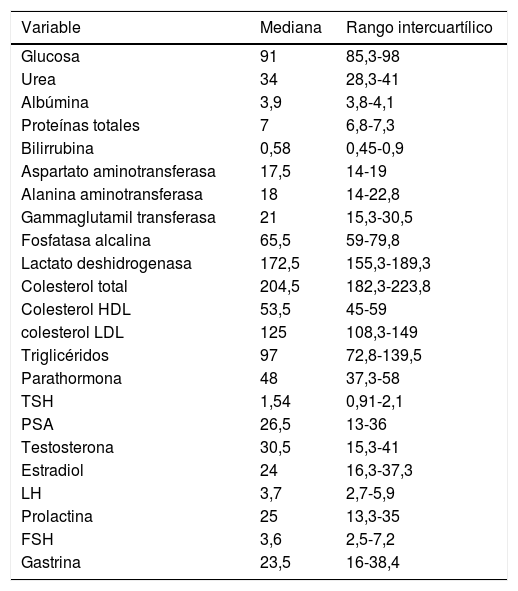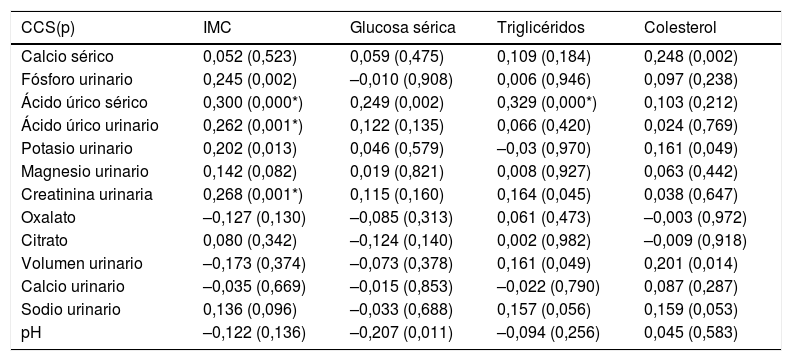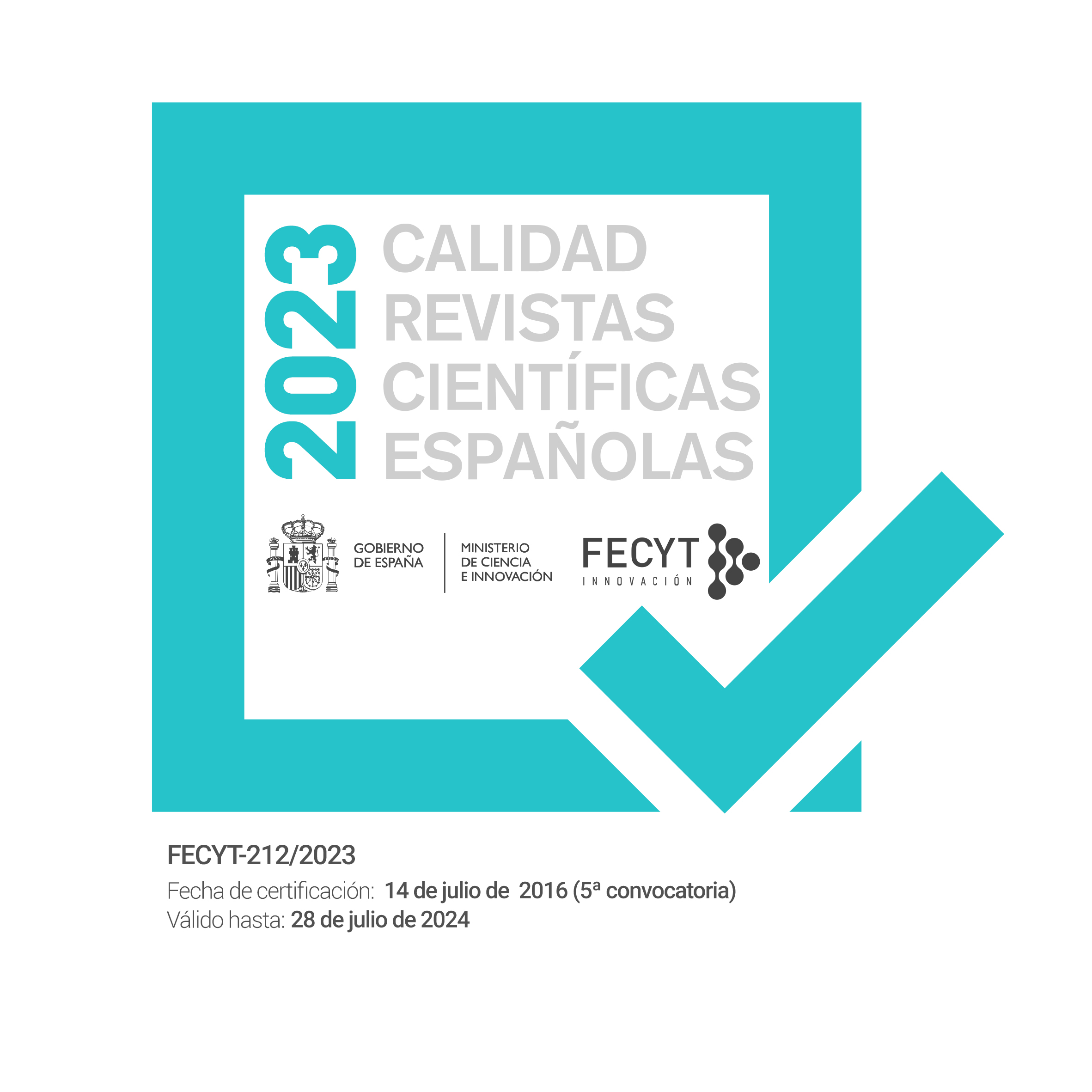Se ha descrito la asociación del síndrome metabólico con la litogénesis, especialmente en cálculos de ácido úrico.
El objetivo de este trabajo es analizar la importancia del síndrome metabólico en la litogénesis oxalocálcica.
Materiales y métodosEvaluación metabólica de 151 pacientes: parámetros bioquímicos, hormonales y orina de 24horas; características asociadas al síndrome metabólico.
Se evaluó la relación entre las características asociadas con el síndrome metabólico y las relacionadas con la litogénesis mediante el coeficiente de correlación de Spearman (CCS), «t» de Student y prueba exacta de Fisher.
ResultadosEl índice de masa corporal promedio (IMC) fue 25,9 (DE 3,7). La mediana de edad fue de 51 años (18,6-84,8) y el 64,9% eran hombres.
No hubo diferencias estadísticamente significativas entre hipertensión y estradiol, testosterona, triglicéridos o colesterol (p>0,05). Referente a la glucosa la media fue 114,5 y 93,5mg/dl en pacientes con y sin hipertensión (p=0,000). Los niveles de glucosa, estradiol, testosterona o colesterol no variaron con la proteinuria (p>0,05). La media de triglicéridos fue 185,6 y 108.2mg/dl en pacientes con y sin proteinuria (p=0,001). La hipertensión y la proteinuria no se asociaron (p=0,586). El IMC se correlacionó con el ácido úrico sérico y urinario y la creatinina urinaria.
ConclusionesExisten pocas asociaciones entre las características del síndrome metabólico y las anomalías relacionadas con la litogénesis. El síndrome metabólico no parece tener un papel relevante en el desarrollo de cálculos oxalocálcicos.
The association of metabolic syndrome with lithogenesis has been described, especially in uric acid stones.
The aim of the work was to analyze the role of the metabolic syndrome in oxalocalcic lithogenesis.
Materials and methodsMetabolic evaluation of 151 patients including biochemical, hormonal and 24-urine urine parameters, as well as characteristics associated with metabolic syndrome.
The relationship between characteristics associated with metabolic syndrome and those related to lithogenesis was evaluated using Spearman's correlation coefficient (SCC), Student's t test and Fisher's exact test.
ResultsThe average body mass index (BMI) was 25.9 (SD 3.7). The median age was 51 years (18.6-84.8) and 64.9% were men.
There were no statistically significant differences between hypertension and estradiol, testosterone, triglycerides, or cholesterol (P=.191, .969, .454, .345, respectively). Regarding glucose, mean value was 114.5 and 93.5mg/dl in patients with and without hypertension (P=.000). Glucose, estradiol, testosterone, or cholesterol levels did not vary with proteinuria (P=.518, P=.227, P=.095, P=.218, respectively). Mean triglycerides were 185.6 and 108.2mg/dl in patients with and without proteinuria (P=.001). Hypertension and proteinuria were not associated (P=.586). BMI correlated with serum and urinary uric acid and urinary creatinine.
ConclusionsThere are few associations between the characteristics of metabolic syndrome and abnormalities related to lithogenesis. Metabolic syndrome does not seem to have a relevant role in the development of oxalocalcic stones.












